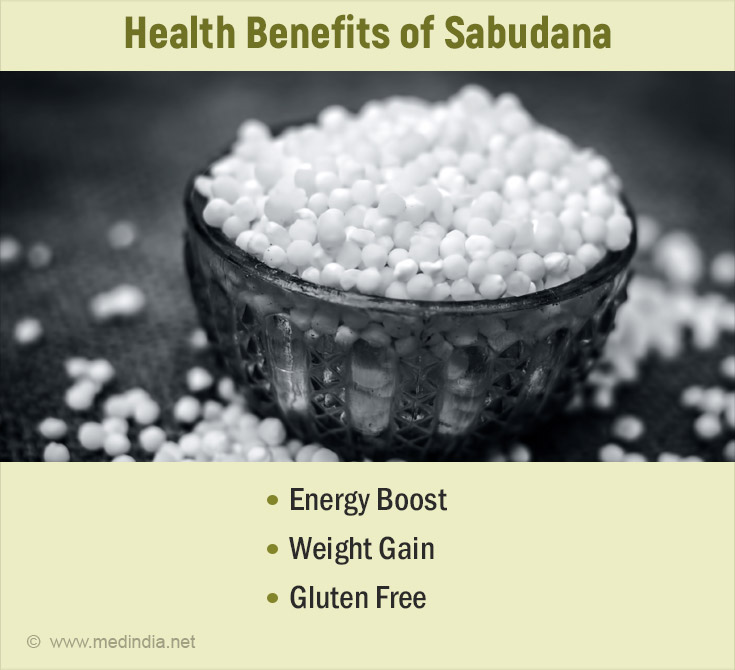- Combination of sago and soy-protein supplementation during endurance cycling exercise and subsequent high-intensity endurance capacity - (https://pubmed.ncbi.nlm.nih.gov/20601739/)
- Effect of Short-Term Supplementation of Potassium Chloride and Potassium Citrate on Blood Pressure in Hypertensives - (https://www.ahajournals.org/doi/10.1161/01.HYP.0000158264.36590.19)
About
Sabudana, commonly known as tapioca pearl or sago, is a starch derived from tapioca roots and processed into pearl-like spears. It includes a high concentration of carbs, making it a quick energy boost. Because of its neutral flavor, it can add texture to breads and soups without altering the taste.
Did You Know?
Sabudana is not only a popular fasting food but also a favorite among endurance athletes for its quick energy boost, thanks to its high carbohydrate content!Sabudana is fulfilling, thus some cultures take it on fasting days. It is used in foods such as sabudana khichdi, which combines sabudana, potatoes, sugar, and peanuts. Sabudana might enhance satiety, therefore you might consume it if you are trying to lose weight. However, starch is not always the greatest option for weight loss. It may contribute to weight gain.
What is Sabudana?
Sabudana is a form of carbohydrate similar to potatoes, bread, rice, and pasta. Carbohydrates offer energy to the body, hence they are an important part of every diet. However, carbs must be consumed in moderation, particularly while trying to reduce weight. It is also advisable to restrict your intake of high-carbohydrate and high-calorie foods during the weight loss journey. Sabudana is classified as "high-carb" and "high-calorie," as it contains a large number of calories per cup.
Is Sabudana Effective for Weight Loss?
If you are attempting to lose weight, sabudana is not the best option. Losing weight entails lowering your food quantity or portion sizes and consuming low-calorie items to generate a calorie deficit.
Eating foods and components that keep you full for extended periods helps you reach this aim. If you feel full and satisfied, you are less inclined to overeat. In this regard, eating sabudana may be a suitable choice, particularly during fasting seasons.
However, this strategy may backfire due to the risk of overconsumption. This starch is not consumed alone. Rather, it is an additional ingredient in recipes, making it difficult to determine how much you are ingesting. Because sabudana is heavy in calories, consuming too much of it can sabotage your weight loss attempts and even induce weight gain.
Furthermore, because sabudana has a large amount of carbohydrates, the added sugar may make you feel hungrier rather than fuller. Carbohydrates are known to induce a rise in insulin levels, which makes some people feel hungry and eat more.
Eating more fat and protein reduces hunger. Unfortunately, sabudana contains a lower concentration of both nutrients.
Health Advantages of Sabudana
Although sabudana is not the best option for weight loss, the starch does provide some health benefits:
Energy Source
Sabudana, a high-calorie, high-carb dietary source, can provide a quick energy boost. This makes you feel less weary and gives you the energy to get through an exercise.
One study explored the usage of tapioca pearls and soy protein to improve endurance during moderate-intensity cycling workouts. Researchers discovered that a sabudana and soy supplement boosted cyclists' endurance by 84% compared to the placebo and postponed weariness(1✔ ✔Trusted Source
Combination of sago and soy-protein supplementation during endurance cycling exercise and subsequent high-intensity endurance capacity
Go to source).
Gluten Free
Another advantage of consuming sabudana is that it does not contain gluten, a protein found in cereals. If you have Celiac disease or gluten intolerance, consuming gluten can cause bloating and stomach ache. Sabudana is a gluten-free ingredient that can be consumed without causing any adverse reactions.

Improves Digestion
Sabudana also has dietary fiber. This promotes digestive health and helps to alleviate bloating, constipation, and indigestion.
Promotes Weight Gain
While sabudana is not recommended for weight loss, it is beneficial for weight gain. It's high in carbohydrates but low in fat, making it a better option for weight growth. It helps you avoid the negative effects of fat consumption, such as an increased risk of heart disease.
Lowers Blood Pressure
Sabudana contains about 16.7 milligrams of potassium per cup. Based on a 2005 study, short-term potassium supplementation can reduce blood pressure(2✔ ✔Trusted Source
Effect of Short-Term Supplementation of Potassium Chloride and Potassium Citrate on Blood Pressure in Hypertensives
Go to source). The American Heart Association (AHA) suggests boosting potassium through food if your blood pressure is above 120/80 mm Hg and you are otherwise healthy. Aim for no more than 4,700 mg of potassium daily. Potassium helps the body eliminate extra sodium through urination, reducing blood vessel tension.
Promotes Strong Bones
Sabudana also contains calcium, which helps to strengthen bones. Eating calcium can lower the risk of developing osteoporosis.
How Much Sabudana Should You Eat?
Even if sabudana is not the best food for weight reduction, it is feasible to lose weight while eating it. The key is moderation. Weight loss requires creating a calorie deficit. In other words, you must expend more calories than you consume. A calorie deficit of 3,500 equals one pound of fat loss. If you eat sabudana to lose weight, do not eat it daily. As a recommendation, limit yourself to 1 1/2 cups each serving.
It's also critical to boost physical activity and burn more calories. Good workouts may include walking, running, biking, and aerobics. Aim for 30 to 60 minutes of moderate-intensity activity at least three to five days a week.
Alternatives to Eating Sabudana
If you wish to lose weight, consider various alternative foods. You do not have to eliminate carbs to lose weight, but you should limit your intake. Some carbohydrates are more effective at weight loss than others because they are full, high in dietary fiber, and low in sugar. Options include whole-wheat pasta with beans, whole-wheat bread, oats, black beans, quinoa, bananas, and apples. In addition to eating the correct carbs, eat more fruits and vegetables, which are lower in calories. Eating extra protein, as well as consuming healthy fats in moderation, will help you lose weight. Include healthy fats such as avocados, almonds, peanut butter, olive oil, and fatty seafood.
Sabudana is a starch widely used in breads, sauces, and soups to thicken or add texture. It can deliver an energy boost and other health advantages but is high in calories and carbs, making it an unsuitable choice for weight loss. If you eat sabudana, keep it in moderation and increase your physical activity to burn off any surplus calories.









